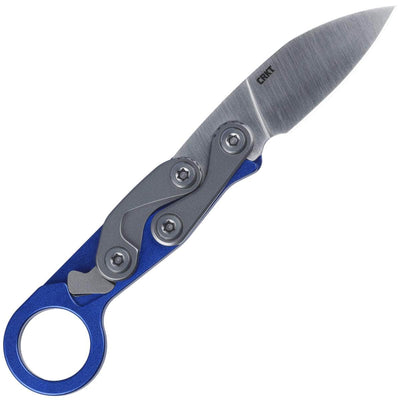Your cart is empty.
Switchblade vs. Assisted Opening Knives
Automatic knives (also known as switchblades) and assisted opening knives are often confused with one another because they tend to look the same to the untrained eye. However, understanding the difference between these two knives is important because switchblades are illegal in most states in America. To give you a better knowledge about the two types of knives, we've created this guide to help you understand the differences between a switchblade and an assisted opening knife.

Background of the Switchblade
Before venturing into the details, it's important to first look at the background of the switchblade. Invented around the 1850s, the switchblade gained notoriety in 1950s American culture thanks to movies featuring young fictional gangs using switchblades as weapons. This, along with fear of youth violence during an economic downturn, led to the creation of the Switchblade Act of 1958 effectively banning interstate commerce of switchblades.
How a Switchblade Works
In basic terms, a switchblade is a knife featuring a blade that springs out of the handle when a button is pressed.
The typical switchblade, which is also known as an automatic or flick knife, looks like a regular folder, rotating around a hinge. But when the knife is being closed, tension from an inner spring is put on the blade. When fully closed, the tension is separated from the knife by a button. When the button is pressed, the tension of the spring is released back onto the blade and it flicks open without any effort.
The second type of switchblade is called the OTF (out the front) switchblade because the blade comes out at the top of the handle, like a pen. The opening mechanism functions the same way; the knife engages when a button releases the tension of the spring onto the blade.
How an Assisted Opening Knife Works
An assisted opening knife, sometimes called a spring-assisted knife, is a knife that springs open only after the blade is slightly pushed open with force.
Unlike the switchblade, nothing holds down the assisted opening knife when it's in the closed position. As the user begins opening up the blade with a thumb stud or flipper lever, which has some resistance, the spring or torsion bar catches the knife and propels it open where it locks into place. For a more detailed look at how the torsion bar works in an assisted opening knife, check out this great video that dissects a Kershaw assisted opener.
How to Tell the Difference
A good indicator of whether a knife is considered a switchblade or an assisted opening knife is what the resting position of the blade is. If the blade's natural inclination is to open without the presence of a hindrance, it's a switchblade. If there is nothing blocking the blade and it stays closed, the knife is an assisted opener (assuming it has a mechanism to help open the knife).
Another way to look at it: If you are able to open the blade without exerting any effort on the actual blade, it's a switchblade. Conversely, engaging an assisted opening knife requires you to put some pressure on the actual blade, whether on the thumb stud or a rear lever connected to the blade, before the opening mechanism takes effect.
Finally, the last surefire way to tell if it's a switchblade is if it has a button that engages the knife. No assisted opening knife will have one.



















